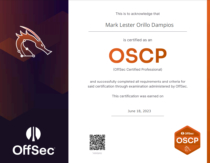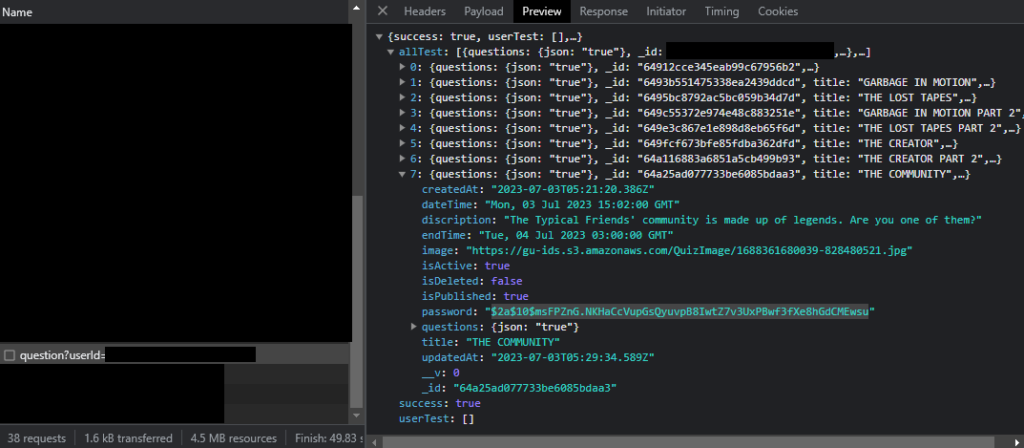The preparation
I’ve been preparing this OSCP thing for almost 4 years. No, I am not kidding. This OSCP is a cultivation of all the knowledge you learn in IT/CS course. OSCP is golden standard when it comes to Penetration Testing that’s why I’m really eager to get this one. This is not the most insane technical exam, but I could say it’s close to insane. Most topics you need to be aware prior on taking OSCP are the following but not limited to: Networking, Basic Programming, OS Fundamentals, Web and Application fundamentals, Basic Researching, CyberSecurity methodologies and frameworks and the Art of Being Persistent.
You need to at least know basic networking, so you know how tunnels work, how machine communicates on different protocols, and a lot more! You will also need to understand networking so you can pivot your paths deep on the network you are penetrating. Having a strong background in networking can definitely help you!
You will also need to know Basic Programming. There are times that you want to automate a certain workload than having it doing manual to save time. Having programming on your skill set also strengthen the ability to read code and find probable errors/vulnerability on applications.
OS Fundamentals! Yes, this is important part of your skillset! You need to know the environment of the machines you are attacking. Sometimes, OS are vulnerable to kernel exploits, especially the old and unpatched OS. It’s also important on your skillset so you can quickly navigate through the machine. You need to at least know basic bash and powershell commands!
Web and Application fundamentals, you need to at least understand how web and application behaves. Most often, you need to find a vulnerability on applications so you can gain a foothold on the machine you are attacking.
Basic Researching, this is needed so you know what to search on the search engines, what to look for and what are the part of puzzles you need to find. Think of it like, the internet is a large haystack, and you need to search for a something that you don’t exactly know. You must have a strong critical thinking to find what you exactly need.
CyberSecurity methodologies and frameworks. These are basic concepts in security, like defense-in-depth, zero trust, and a lot more. These concepts can be usually used as opposite when playing in attacker or read team. Once you know he weakness of the network / machines, it’s easy to navigate through.
Art of Being Persistent. This is the willingness to go over and over, trying harder, and not giving up easily! You need to be persistent! You need to have the patience to sit for almost 12 hours a day just to solve a single problem! As OffSec says: “TRY HARDER!”
Before I took OSCP, I went to HTB first. I already talked about HTB on my past article, you can check it here: http://mark.rxmsolutions.com/oscp-a-little-update/.
Basically, I took HTB academy modules first because HTB offers lifetime access to their learning modules. In this way, you can grasp the feeling on how you can effectively use the tools. When you enroll to OSCP, you are only given 90 days to work out the activities and labs, and their pricing is not a joke, so you need to be prepared before jumping in!
Also, as part of my preparation, I also finished boxes as indicated in these link: https://hackersinterview.com/oscp/oscp-like-machines-in-htb-vulnhub-tryhackme/.
They said that these boxes are OSCP-like boxes, so I went for it.
The Fall
So when I finished the activities and secured my bonus points for the OSCP Exam, I feel like I’m confident to jump on the exam.
I booked my OSCP exam. It was a 24-hour proctored exam.
To know more about the exam, check this link: https://help.offsec.com/hc/en-us/articles/360040165632-OSCP-Exam-Guide
During the exam, I was caught in the rabbit holes! I was focusing my energy on the wrong paths.
I cannot discuss anymore regarding the exam content. But my mistake was I’m making things complicated in my head.
I was awake 24 hours trying to pwn machines, but in the end, my scores wasn’t enough to pass my first attempt.
I failed.
The Rise
I went look back to learn what are my mistakes. I did a lot of readings, and practiced more.
And then I booked again for 2nd attempt!
On my 2nd attempt, when I attained the minimum passing score, I feel relieved!
But I still have a few hours left, so I did “TRY HARDER!”.
I stayed awake for almost 19 hours, and rested only for 5 hours.
I didn’t pwnd all machines, but my score is above the minimum 70 points.
After that 24 hour long exam, it feels like a hazing!
But it’s not over yet!
I have to make a report on my findings.
The report submission has 24 hour window.
I composed my report, checked everything, and submitted!

My report was 35 pages. I included the step-by-step procedure on compromising the targets, and also a lot of screenshot!
After a few days, I received an email from OffSec. I was really anxious while reading the email.
And suddenly my heart skipped a beat!
I passed!
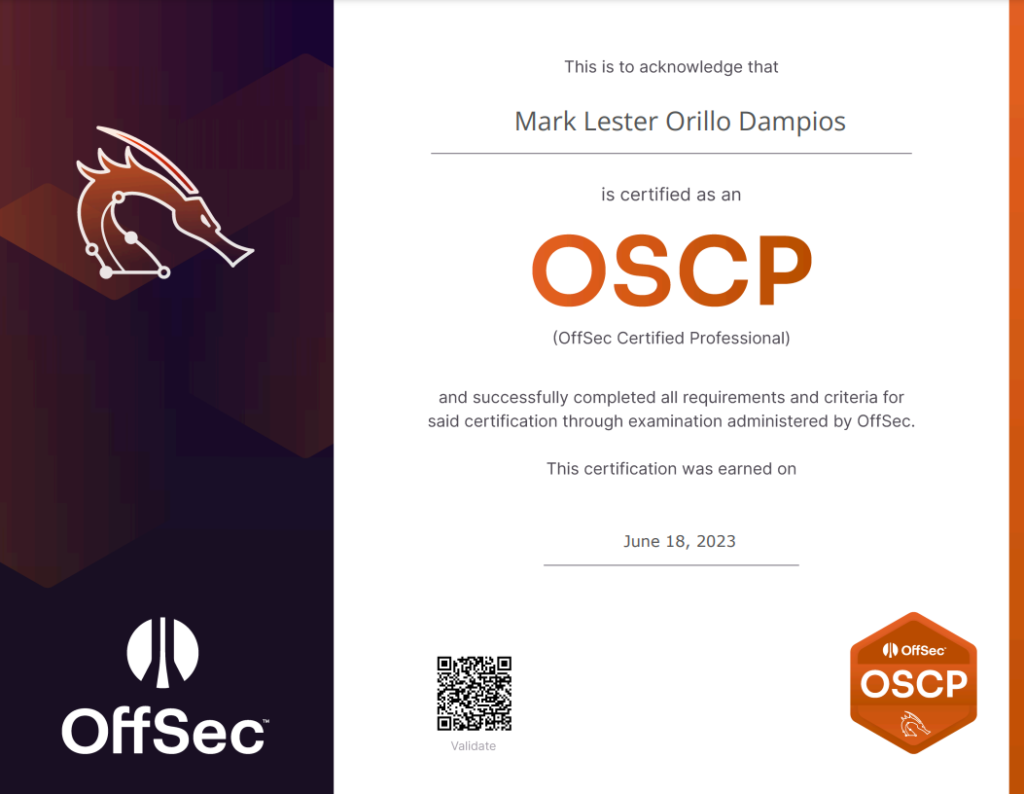
For the Future Exam Takers
I will strongly advice to make things not complicated. Try simple solutions first.
I’ll also advice to take a lot of sleep before taking the exam. It’s a 24-hour long exam. You will probably be awake for the next 24 hours.
Second to the last advice I can give is to prepare a lot of foods and water, especially the foods that you can gain a lot of energy. Stay hydrated!.
And my important advice is to, always take a break! Have a lot of window to get rest!
What now?
I also finished the HTB Prolab’s Dante and HTB Prolab’s Offshore!
I’m practicing in the Prolabs because I’m planning to take CPTS soon, but I think I will take it after few more months from now as my focus will be shifted to my other life priorities.
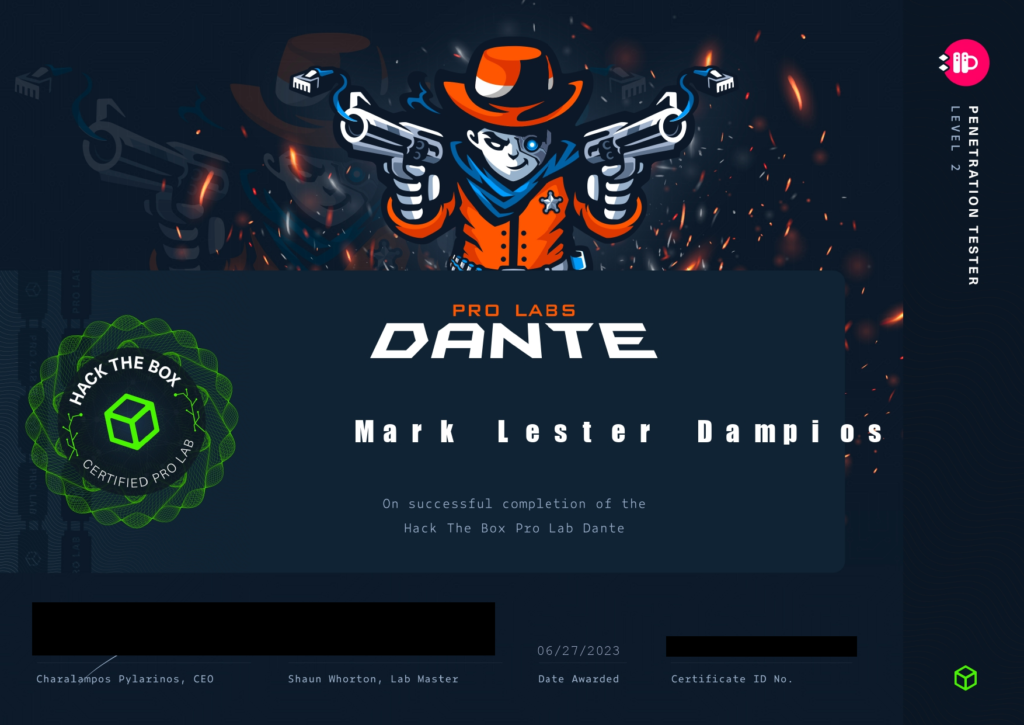
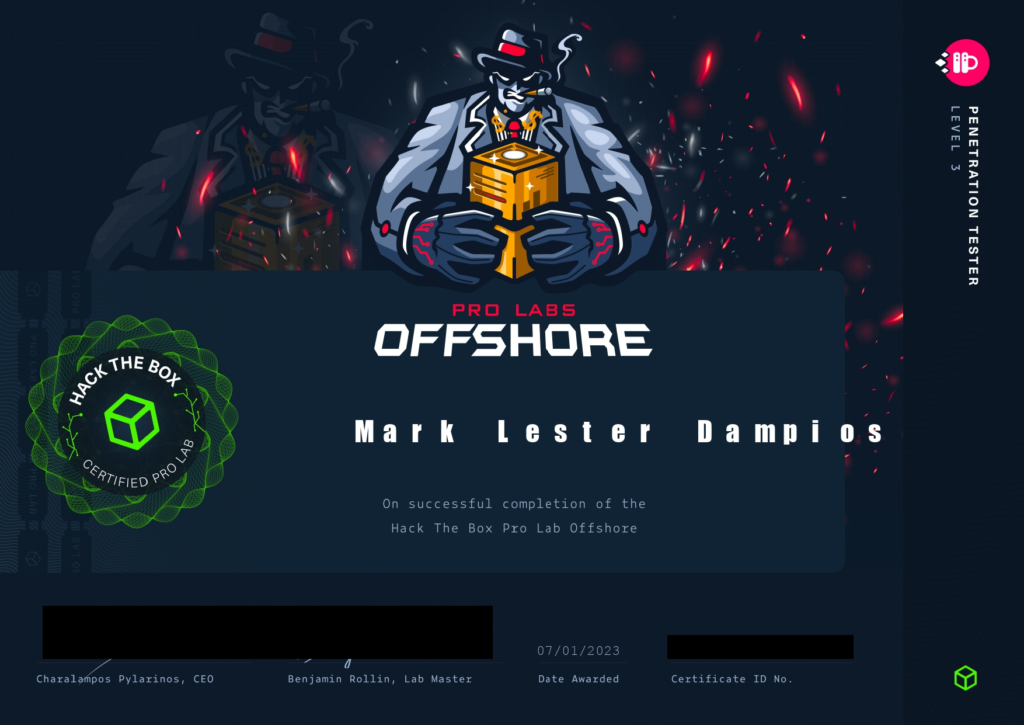
Above all, this wouldn’t be possible without the support of my partner.
I will always love you Ruffa! Thank you for the non-stop support!
Thank you so much for reading this guys!
More writeups to come soon!
